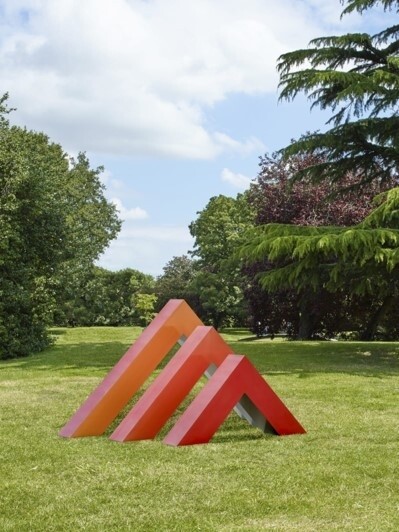In the Balance: Between Painting and Sculpture, 1965–1985 | Art & Artists
Oct 19, 2022–Mar 5, 2023
In the Balance: Between Painting and Sculpture, 1965–1985 | Art & Artists
Judy Chicago
2
When Judy Chicago initially made Trinity in 1965, she stretched canvas over plywood units to create its discrete forms. She then spray-painted the surfaces using a technique she had learned in an auto-body school. At that time, many of her fellow—mostly male—artists worked with industrial fabricators to produce Minimalist sculptures, and Chicago was determined to access methods of production typically unavailable to women. The work’s title, which has Christian religious connotations, may humorously nod to the dogmatic fervor her contemporaries brought to their work.
Chicago became a leading figure of the feminist art movement in the 1970s. Rejecting the notion that she should “rearrange my life to suit my male partner,” she turned away from “rearrangeable” abstract sculpture during that time. Decades later, however, Chicago refabricated this tripartite sculpture in metal. This revisitation suggests a different kind of triad: the interrelationship of color, spatial patterning, and sites of display.

